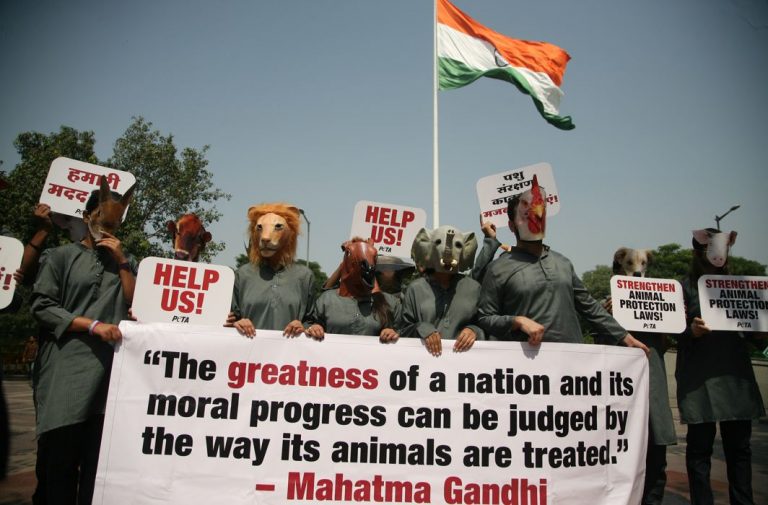
In a unique judgment, the Punjab and Haryana High Court has declared that the entire animal kingdom, including avian and aquatic, are legal entities
If you are the owner of a tonga anywhere in Haryana and use it to transport office-goers to work or children to school and back, make sure there are no more than four persons, excluding the driver and children below six years of age, riding it at any given time. Similarly, if you own a bullock, camel or horse cart, don’t forget to put fluorescent reflectors at the front and back of the cart and ensure that the animals are covered with fluorescent reflector stripes for visibility. Or, if you use animals for drawing vehicles, make sure you do so only when the temperature does not exceed 37°C between 11 am and 4 pm in summer or does not go below 5°C between 5 am and 7 am and between 10 pm and 5 am in winter.
This set of dos and don’ts have come not from the Society for Prevention of Cruelty to Animals but from the Punjab and Haryana High Court where Justice Rajiv Sharma ruled that all living creatures are legal entities with distinct persona and, like living persons, enjoy rights and have duties and liabilities.
Justice Sharma gave the order while upholding the sentence given to a petitioner by a judicial magistrate in Karnal under the Punjab Prohibition of Cow Slaughter Act.
The case was related to an incident in which a man was caught transporting cows from Haryana to Uttar Pradesh, for which he was duly charged under the Haryana rules. The judicial magistrate of Karnal found him guilty and sentenced him to two years’ imprisonment. On appeal, the sessions court, too, upheld the conviction but reduced the sentence to six months.
It was submitted before the court that cow slaughter had been banned in Haryana and permission was needed from the competent authority even to transport cows and this was also subject to certain rules.
Justice Sharma pointed out that since the petitioner had already served the required sentence in jail, an order against the additional session judge’s verdict would be ineffective. However, taking a broad view on animal protection and rights, the judge referred to various pieces of legislation framed by state governments and the centre in support of animal rights in his judgment.
His order had several directives that ensure animal rights. These included:
- The government must ensure that animals do not carry loads exceeding prescribed limits while drawing vehicles.
- No animal shall carry loads in excess of the weights prescribed.
- Weight should be halved if the route involves an ascent exceeding the limit prescribed by the Court.
- Animal-drawn vehicles must not carry more than four persons, excluding the driver and children below six years of age.
- Use of spike stick or bit, harness or yoke with spikes, knobs or projections or any other sharp tackle or equipment is banned throughout Haryana to avoid bruises, swelling and abrasions in animals. Bullock and horse-drawn carts must have fluorescent reflectors at the front and back of the carts and animals must be covered with fluorescent reflector stripes for visibility at night.
- Municipal bodies throughout the state of Haryana must provide shelter of suitable size to horses, bullocks and camels drawing vehicles.
- Provisions of the Transport of Animals Rules, 1978, and the Haryana Motor Vehicles Rules, 1993, must be followed while transporting animals.
- Vehicles must be made suitable for transporting animals by providing padding, anti-slipping materials, etc. There should be a limit on the number of cattle transported per vehicle (no more than six heads). There should be restrictions on overcrowding the vehicle with other merchandise. It must be made sure that there is an attendant with the animal being transported. The cattle must face the engine to prevent it from being frightened or injured. First-aid must be provided to cattle in need.
- The state must appoint veterinary officers as per Section 3 of the Prevention and Control of Infectious and Contagious Diseases in Animals Act, 2009, and declare controlled and free areas to prevent, control or eradicate any scheduled disease by notification.
- The state must enforce the provisions of the 2009 Act to prevent animals from infectious and contagious diseases.
- Animals, including cows, buffaloes, calves, horses, ponies, mules, donkeys, foals, goats and sheep, kids and lambs, pigs and piglets shall not be transported on foot beyond the period specified in Rule 12 of the Prevention of Cruelty to Animals (Transport of Animals on Foot) Rules, 2001.
- Animals shall be transported on foot only when the temperature is between 12°C and 30°C. They should be provided water every two hours and food every four hours. They should not be made to walk more than two hours at a stretch.
- The state must ensure that every animal used in transportation is healthy. A certificate from a veterinary doctor for each animal is compulsory as per the 2001 rules.
The list is long and in summing up, the Court noted: “All animals have honour and dignity…. Have an inherent right to live and is required to be protected by law. The rights and privacy of animals are to be respected and protected from unlawful attacks.”
Interestingly, Justice Sharma has been espousing the cause and rights of not just animals through his judgments but even rivers. While in July 2018, he passed a similar judgment in the Uttarakhand High Court declaring the animal kingdom a legal entity, a year earlier he had declared that even rivers like the Ganga and Yamuna as well as their tributaries have the status of legal entities.
—Furkan Ahmed

